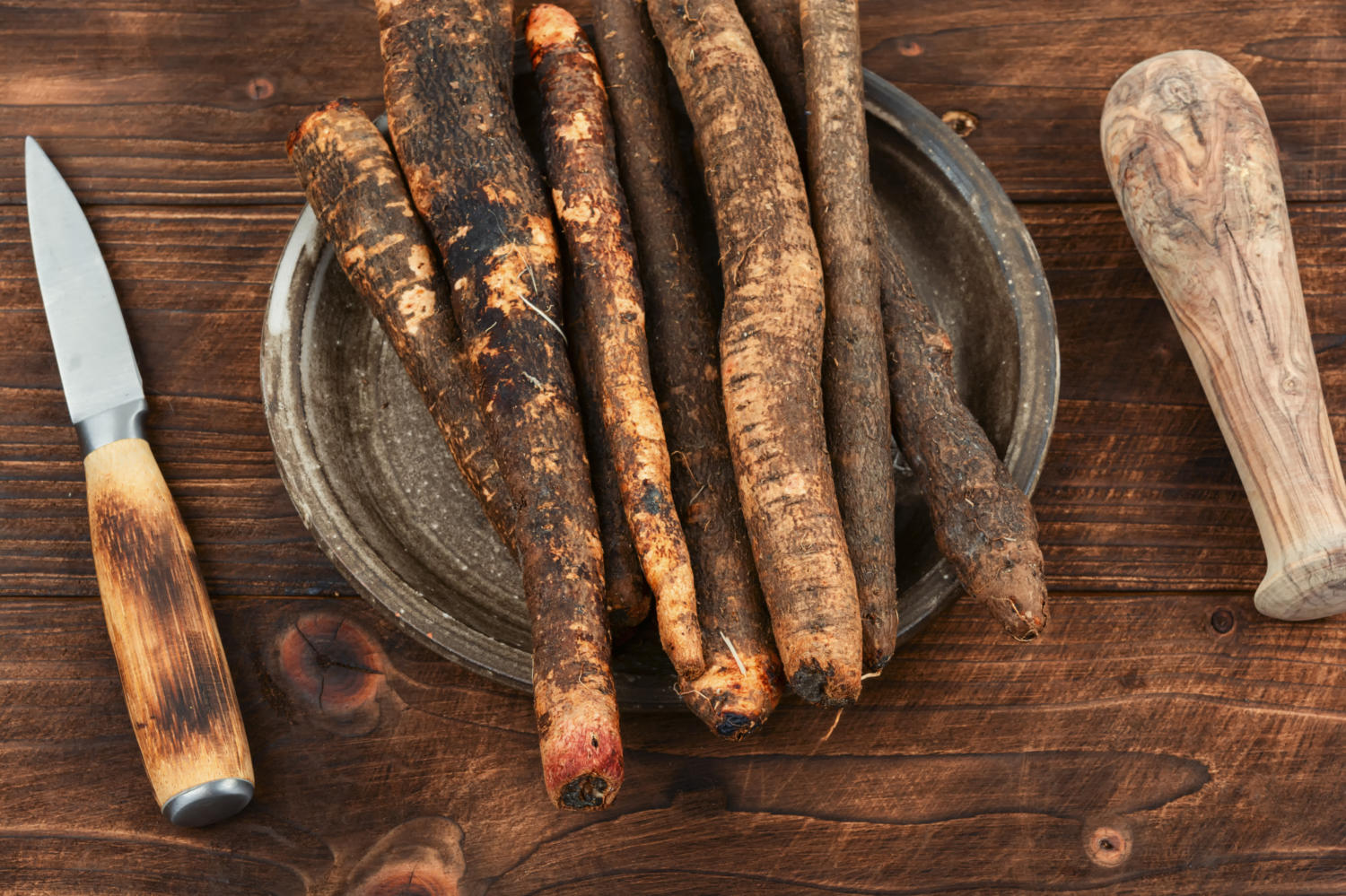
One of the benefits of growing your own fruit and veg is being able to give unusual crops a go. Salsify and scorzonera are two I’ve occasionally experimented with. I say ‘experimented’ because neither has managed to produce impressive enough results to earn a regular spot on the plot. I’ll explain the drawbacks of growing salsify and scorzonera shortly, but first, in case you’re not familiar with either of these two niche crops, let’s take a quick look at both.
Salsify, probably the more commonly cultivated of the two, is best compared to a slim parsnip. It has the same tapering root but is thinner while the skin colour is a darker creamy brown. Scorzonera has some similarities to salsify, but the root doesn’t taper and is usually even thinner. Most distinctively, the skin is brown black rather than creamy brown, although the peeled flesh, as with salsify, is white. Despite the differences, the two plants are often confused, not helped by the fact that scorzonera is sometimes referred to as ‘black salsify’. Botanically, the plants aren’t that closely related. Salsify is Tragopogon porrifolius and scorzonera is Scorzonera hispanica. Flavour wise, salsify is often considered the more delectable, sometimes dubbed the ‘vegetable oyster’.
I’m not in a position to compare salsify with oysters having never eaten the shellfish. However, while both it and scorzonera have a distinct and pleasant flavour, I’d always prefer a parsnip or carrot. But it’s not the taste of salsify and scorzonera I’ve found disappointing. Rather, for both, it’s the quantity and quality of the crop produced. Quantity wise— in terms of how many plants you get in a harvest— most other commonly grown root crops will give a better return for the space occupied. This is especially the case for the thinner rooted scorzonera. As for quality, in my experience salsify seems very prone to forking, that is producing several often intertwined roots that are difficult to prepare in the kitchen. Scorzonera seems less susceptible to this sin but is not immune. Perhaps I’ve not grown them on suitable ground. As with carrots, I suspect sandy soil may help produce straighter and deeper roots. Another problem is the apparent vulnerability of the young plants. As well as being susceptible to weed competition, the grass-like tops of the young seedlings can mysteriously disappear. On several occasions my entire crop was scissored off at ground level by grazers unknown. Mice or voles were the probable culprits.
On the plus side, if you can get salsify and scorzonera growing away, once established these aren’t crops that require much attention. Another advantage, as with parsnips, is hardiness— meaning that the roots can be left in the ground and dug up as required through the winter. A further bonus, should you leave any roots unharvested, is colourful flowers next season. Salsify is a biennial and scorzonera a perennial, so both will throw up flower stems in their second year. Salsify, which flowers pink, is especially attractive.
Should you want to experiment with salsify and/or scorzonera now is the time to get both in the ground. Seed, which is easily sown as it is relatively large, is best put in the ground between mid-April and mid-May. Sow in shallow drills four-to-five centimetres apart. If you only want to give one a go I’d plump for scorzonera. Although it’ll probably produce less of a yield than salsify, it’s more likely to give a decent shaped root.











Add a comment